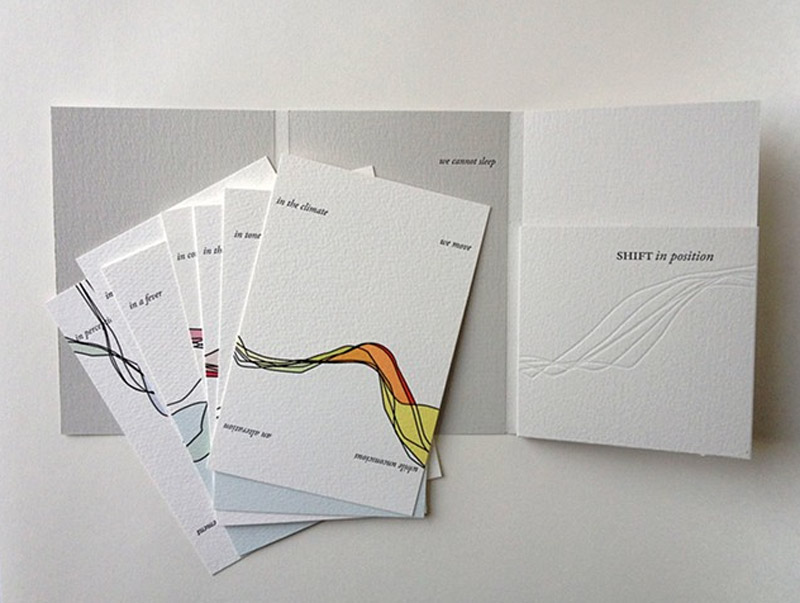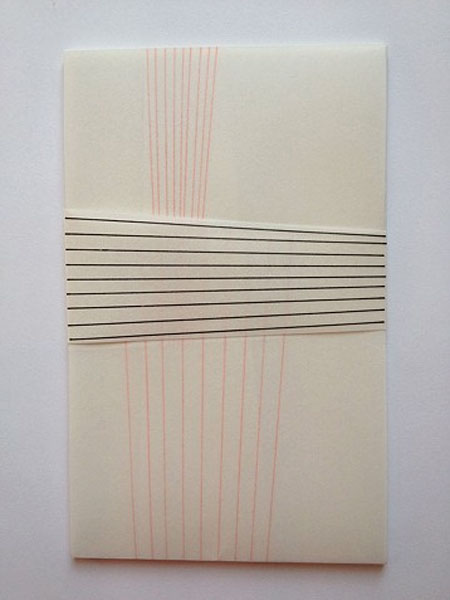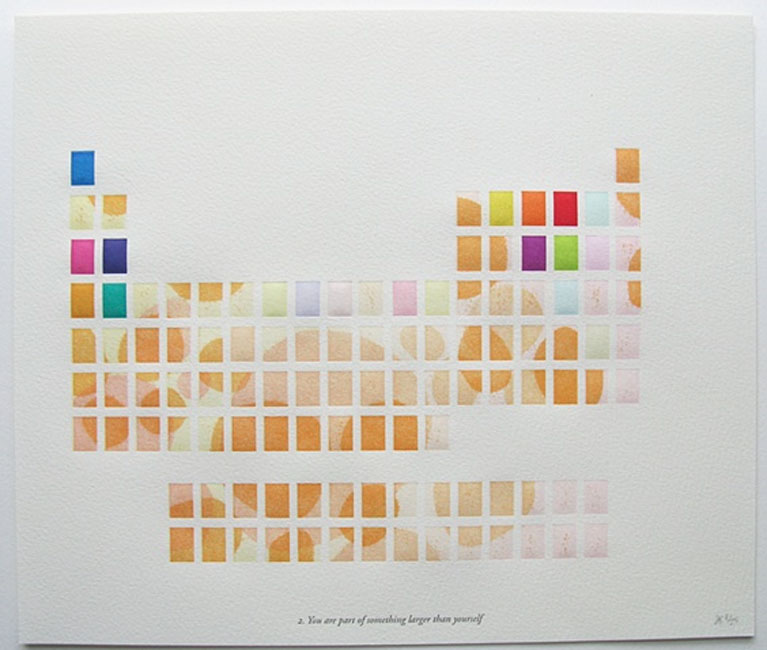Sarah Bryant is apart of the five-person collaborative group Shift-Lab, which she discusses more in-depth below. The image above shows the full spread of their first collaborative project, Shift, which was created in 2014 in an edition of 20. Each of the five artists created a small letterpress printed book that reflects a shift in perspective as well as a matching print. Both the books and prints were displayed at the San Francisco Center for the Book in 2014.
The books are housed together in a custom drop-spine box shown third from the left with a printed title label.
Can you discuss the collaborative group Shift-Lab. Who are its members and what type of projects do you work on together?
Shift-lab is made up of myself, Katie Baldwin, Denise Bookwalter, Macy Chadwick and Tricia Treacy. We started as a group in the summer of 2013 and since then we’ve produced a book project (Shift) for an exhibition at the San Francisco Center for Book Arts, staged a pair of printing events (I had to be a remote participant, unfortunately,) and met for a week in North Carolina to print a project together. We will be exhibiting together at the Codex Book Fair in February, and are working on plans to meet for a skill share/book project next summer. You can find us all at shift-lab.org.
Shift is a set of five books all with the same theme. Each of us created an edition of 20 books of the same dimensions. These five books are housed together in an enclosure. The books vary in content, Katie’s is an exploration into the different diggings of the Erie Canal. Tricia was interested in the shift key on a keyboard. I was having trouble sleeping while I was working on this project, and so my book evolved into a body shifting and moving in bed.
For your book Shift in Position, how did you monitor your sleeping behavior and then transfer the imagery into a print?
I was spending a good portion of each night around this time rolling and repositioning myself in the hopes of getting to sleep. I didn’t monitor this activity, exactly, but took dozens of photographs of myself as I repeated the familiar movements I was doing each night. These photos were taken against a white background. I traced the shifting line of my body over and over again and layered these lines, creating the basic imagery for the book. The “book” is actually a series of panels that can be rearranged. Some of the imagery locks in together, some doesn’t. Text related to shift and change printed on the top and bottom of each panels always locks in to make some kind of sense. I wanted the process of rearranging the panels to be reminiscent of the kind of non-restful process dreaming that I was slipping in and out of at night.






















